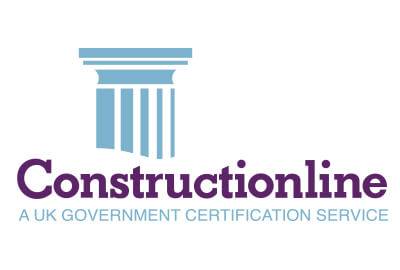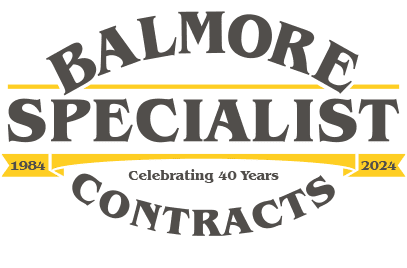In the realm of exterior wall finishes, two techniques that often draw attention for their distinctive textures and durability are roughcasting and pebbledashing.
While these two methods share similarities, they are not quite the same. As one of the leading building maintenance contractors in the central belt of Scotland, we want to explore the key differences between roughcasting and pebbledashing and shed light on their unique characteristics and applications.
Roughcasting: The Textured Tapestry of Mortar and Stones
Roughcasting, also known as harling in some regions, is a traditional Scottish exterior wall finishing technique that involves applying a mixture of mortar, small stones or pebbles, and sometimes pigments to the surface of a building. The result is a textured and rugged appearance that adds character and weather protection to structures.
Key Features of Roughcasting:
- Texture: Roughcasting creates a textured, irregular surface with the stones embedded in the mortar.
- Materials: It typically uses mortar (a mixture of cement, sand, and water), small stones or pebbles, and optional pigments for color.
- Application: The process begins with a base layer of mortar (the “scratch coat”), onto which stones or pebbles are pressed or thrown. A topcoat of mortar may follow to secure the stones and provide weather resistance.
- Appearance: The finish is textured and often has a rustic, natural look.
- Durability: Roughcasting is known for its durability and ability to withstand harsh weather conditions.
Pebbledashing: A Surface Adorned with Pebbles
Pebbledashing, on the other hand, is an exterior wall finishing technique that also incorporates small stones or pebbles into the surface. However, the approach and appearance differ from roughcasting.
Key Features of Pebbledashing:
- Texture: Pebbledashing involves applying a layer of mortar or render to the wall surface and then embedding small pebbles or stones into the wet surface.
- Materials: It typically uses a mortar or render mix (often with sand and cement), along with pebbles or small stones.
- Application: The pebbles or stones are pushed into the wet mortar or render, creating a textured surface.
- Appearance: Pebbledashing often results in a more uniform texture compared to roughcasting. The stones are embedded evenly across the surface.
- Durability: Like roughcasting, pebbledashing is valued for its durability and ability to protect against weather elements.
Distinguishing Between the Two
While both techniques involve the application of small stones or pebbles onto a wall’s surface, the main difference lies in the overall appearance and texture they produce. Roughcasting is known for its rough and irregular texture, with stones embedded in a less uniform fashion. In contrast, pebbledashing yields a more even texture, with stones embedded uniformly across the surface.
Another difference can be the terminology used in different regions. What is called roughcasting in Scotland may be referred to as pebbledashing in other areas, contributing to some confusion.
Choosing the Right Finish
Selecting between roughcasting and pebbledashing depends on the desired aesthetic effect and regional preferences. Both techniques offer excellent weather protection and durability, making them suitable for various architectural styles. Whether you’re aiming for a rugged, textured appearance with roughcasting or a more uniform, pebble-studded finish with pebbledashing, understanding the differences between these techniques helps you make an informed choice that best suits your building project’s needs and design goals.
And at Balmore, we can deliver a superior service whether you go with roughcasting or pebbledashing.
Established in 1984, we have become one of the UK’s leading specialists in Stonework Restoration, Rope Access/Steeplejack Works, Lightning Protection, Seamless Roofing Systems, Commercial Cleaning and Building Maintenance.
With our head office in Port Glasgow, we have been expanding both our range of services and the areas of Scotland that we cover. As a multi-service construction company, we have experience in commercial, industrial and private contracts, establishing a reputation for progressing projects in a professional & timeous manner to the complete satisfaction of our clients’ requirements.
To find out more about our roofing and building maintenance services, please contact us.













